.jpg)
1983 - 20 Years 911
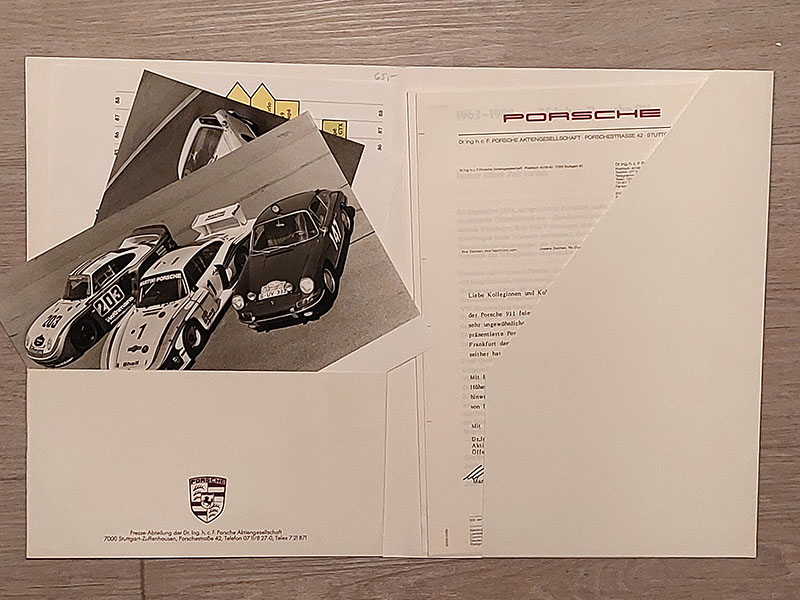

Stuttgart, June 6, 1988
Dear Colleagues,
The Porsche 911 is celebrating a significant anniversary this year, and a very unusual one for an automobile: it is turning 25. In September 1963, Porsche presented the six-cylinder sports car at the International Motor Show in Frankfurt as the successor to the 356 model – and much has happened since then.
With the enclosed press kit, we have attempted to describe in detail the development and highlights of the Porsche 911's career over the past quarter-century. We hope that this information will be of interest or even useful to you.


In September 1963, at the IAA in Frankfurt, Porsche presented the Type 911 to the public for the first time – then still under the designation 901. The new sports car shared not a single screw with its predecessor, the Volkswagen-derived Type 356. The air-cooled six-cylinder boxer engine, the 2+2 coupé body with front trunk, and the chassis with semi-trailing arm rear axle were completely new designs.
Nevertheless, there was no doubt: This was a typical Porsche. In its conception with an air-cooled rear engine, it resembled not only the 356, but also the Volkswagen Beetle, which was still being produced in the millions at that time. The current Chairman of the Supervisory Board, Professor Ferry Porsche – who was involved in VW development in the 1930s and realized his dream car after the war with the 356 – says: "With the 911, we were completely free. We broke away from the VW parts that still played a role in the 356. But I didn't change the basic concept. I didn't want to do anything different, but rather continue what had proven successful for us." Ferry Porsche had established two fundamental requirements for the development of the 911: more power and more space. The four-cylinder engine, derived from the Beetle engine, had reached its performance limits with 95 hp, and many Porsche drivers wanted more space in the rear seats and more trunk space. Thus, a sporty four-seater prototype was created, which initially even included an additional rear trunk with a tailgate. To meet the demand for high performance and low weight, the decision was made to go with the coupé, featuring folding rear jump seats and a front trunk. The body was designed by the young Ferdinand Alexander Porsche – today one of the leading industrial designers.
The six-cylinder boxer engine produced 130 hp – a respectable result for a 2-liter displacement, even by today's standards. The young engineers Ferdinand Piëch – Porsche's grandson and current Audi CEO – and Hans Mezger, the designer of the TAG-Porsche engine, the most successful Grand Prix engine of the turbo era with three world championships. were involved in its construction.
The 911 engine is also an integral part of racing history: In the near-production 935 and in the two-seater Porsche 936, 956, and 962 racing cars, it achieved outputs of over 700 hp as a turbocharged unit, becoming a multiple world champion and a serial winner of the dreaded 24 Hours of Le Mans, the toughest endurance race in the world.
The engine proved equally capable of further development in the production 911. As a naturally aspirated engine, it now has a displacement of 3.2 liters and produces 231 hp. The turbocharged 3.3-liter version in the 911 Turbo, proven over many years, delivers 300 hp. In the 959, the evolutionary type derived from the 911, it boasts 450 hp – combined with the elasticity and smoothness of an everyday engine.
The prerequisite for this increase over two decades is the technically sophisticated design, which has consistently set new standards in the use of lightweight materials, mixture formation (the 911 was the first to introduce mechanical port fuel injection), and, not least, turbo technology. The 959 demonstrates that the career of this extraordinary engine is far from over.
25 years of the Porsche 911 are synonymous with 25 years of technical innovation and development – this is also evident in the chassis and body. In 1963, the 911 was one of the first cars with the now widespread semi-trailing arm double-joint rear axle. Professor Helmuth Bott, the current head of Porsche's development department, and Peter Falk, head of the successful Weissach racing department, actively and enthusiastically contributed to the chassis development and driving tests. This marked the beginning of a systematic exploration of the driving dynamics of sports cars. The tire and wheel developments for the 911 set a precedent in automotive engineering: combating aquaplaning through open tire profiles, investigating the effects of wheel and tire widths, the first light-alloy wheels, and high-speed tires. Safety tires and automatic tire pressure monitoring are some of the milestones of this ongoing development work.
The 911's rear-engine concept, with its superior traction, proved to be an ideal basis for the development of all-wheel drive. The electronically controlled all-wheel drive system of the 959 emerged from the 911 all-wheel-drive concept car presented in 1981. This system impressively proved its worth with two victories in the grueling Paris-Dakar Rally. In the production 959 models, it demonstrates its safety-enhancing effects on the road.
The 911 body not only outlasted changing styling trends, but also repeatedly pioneered future developments in terms of functionality. As early as 1967, it received black windshield wipers, followed by black rearview mirrors and trim pieces. This initiated the general move away from the reflective chrome finish. By 1974, rubber-covered bumpers with impact absorption had been introduced. The standard front spoilers, introduced early to increase downforce, the "ducktail" rear spoiler of the Carrera RS (1973), and the flat spoiler of the 911 Turbo also set a precedent. While technically sound in some cases, in others they became mere showpieces.
As early as 1975, Porsche introduced full galvanization of the body for the 911, and later for the newly added transaxle models. This became the basis for extended warranties, putting Porsche ahead of all other automakers in this regard. This early and consistent commitment to value retention directly benefits Porsche owners in the form of high resale prices. Only now are other automakers beginning to follow suit.
The special status of the Porsche 911, often considered an irrational myth, is therefore based on solid realities. The uniqueness of the concept, the commitment to further development and to the role of technological pioneer secure this special position far beyond the anniversary year of 1988.

.jpg)
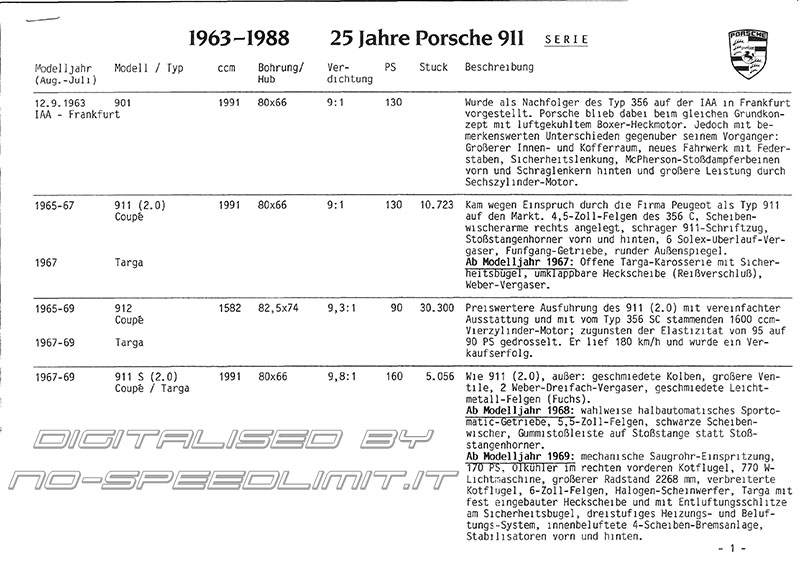
.jpg)

.jpg)
1983 - 20 Years 911
.jpg)
1993 - 30 Years 911
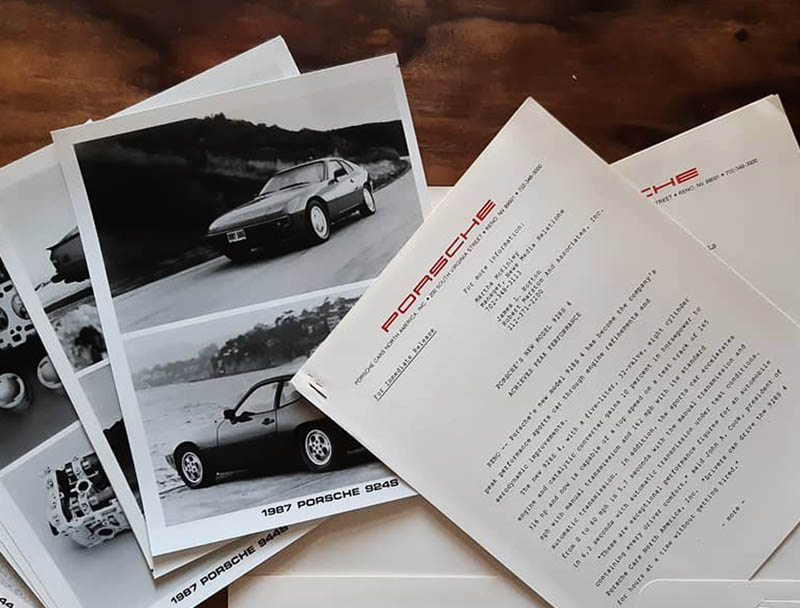
Porsche Press kit
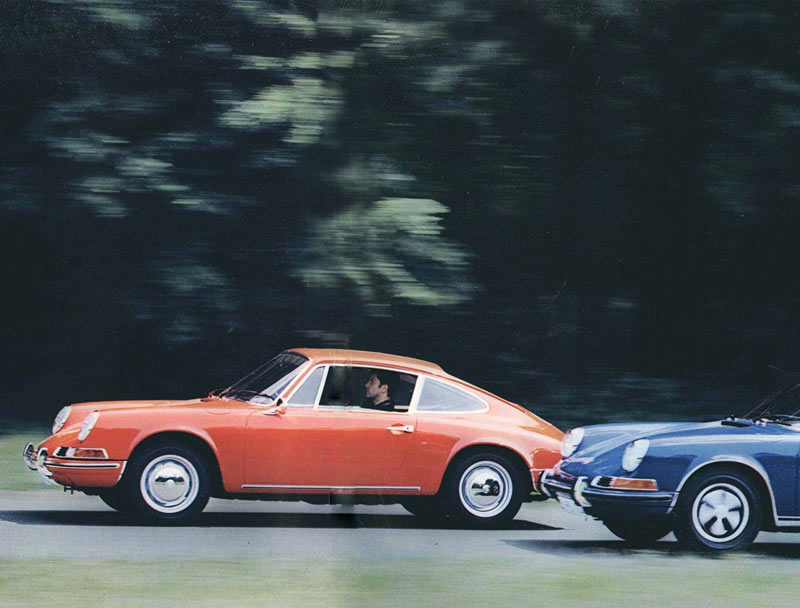
Porsche Literature
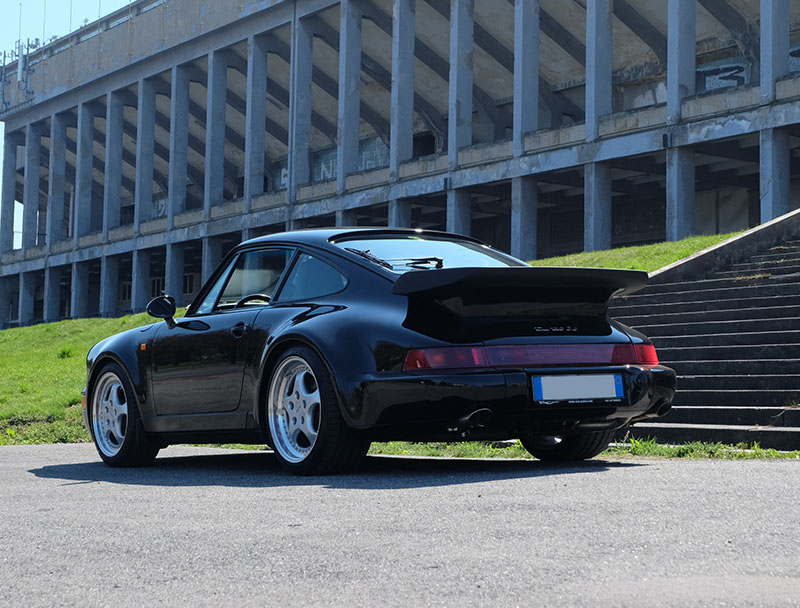
Our Porsche Cars